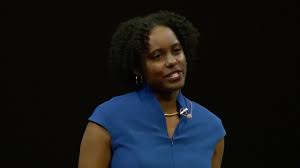Discover how affirming diversity in the classroom impacts students’ lives, creating inclusive spaces where they feel valued and seen, based on insights from Nadiyah Herron’s TEDx talk. A must-read for educators, leaders, and advocates of DEIBJ.
Introduction: Understanding Diversity in Education
In her TEDx talk, “Affirming Diversity in the Classroom: Why It Matters to Your Students,” Nadiyah Herron illuminates the profound impact of inclusive and diverse educational environments on students’ lives. Herron passionately emphasizes that creating spaces where students feel seen, heard, and valued isn’t a trend; it’s essential for their growth and success. Herron shares personal stories and research-driven insights, underscoring the role teachers and educators play in affirming diversity within educational settings.
I see Herron’s insights as a timely reminder of the transformative power education holds when infused with empathy, awareness, and intentional inclusivity. When students feel acknowledged for their identities, they not only excel academically but also develop a stronger sense of self and community. Herron’s talk challenges us to reimagine classrooms as spaces that celebrate every unique background, skill, and perspective, crafting a foundation for lifelong confidence and resilience.
Recognizing Identity and Belonging: The Heart of Inclusive Education
Herron speaks to the importance of students feeling recognized for who they are. She argues that affirming diversity involves more than just acknowledging differences; it’s about creating an environment where each student feels like they belong. This validation fosters confidence and security, which in turn, enhances learning outcomes and classroom dynamics.
Embracing diversity in identity and creating a genuine sense of belonging are critical in today’s classrooms. The sense of security students feel when their identities are validated has a measurable impact on their academic engagement and personal growth. For educators, it’s not enough to merely avoid bias—true inclusion means affirmatively supporting each student’s unique story. In doing so, we’re building students who not only understand their worth but are ready to contribute to society with empathy and awareness.
Creating Safe Spaces: Why Representation and Voice Matter
Herron highlights that a critical aspect of affirming diversity is ensuring that students feel safe to express themselves. She argues that educators can’t simply expect students to thrive in environments where they don’t feel represented. Safe spaces where students can explore their identities and voices without fear or judgment are essential to their development and engagement.
Creating safe spaces in classrooms requires more than just passive acceptance; it involves an active commitment to learning about students’ experiences, backgrounds, and needs. In a diverse classroom, safety isn’t about shielding students from discomfort but about providing an environment where everyone feels supported. Herron’s insights reinforce that safe spaces are foundational for students to articulate their experiences and learn from one another. For teachers, this involves self-reflection and an openness to adapt their methods to meet the needs of each student. The result is a dynamic, compassionate environment that values every voice.
Cultural Relevance in Curriculum: Connecting Students to Content
Herron stresses that content must be culturally relevant for students to feel connected and engaged. A curriculum that reflects diverse perspectives allows students to see themselves within the material, fostering a deeper personal connection and enhancing the overall learning experience.
For education to be meaningful, it must resonate on a personal level. Herron’s focus on cultural relevance underscores the importance of integrating diverse narratives into the curriculum. As educators, the way we present content speaks volumes about whose stories are deemed valuable and whose experiences matter. Incorporating culturally relevant materials not only empowers marginalized students but enriches the understanding of all students, building empathy and a broader worldview. This is the foundation for creating a generation that values diversity, equity, and inclusivity beyond the classroom.
Teacher as Ally and Advocate: Leading with Empathy and Purpose
Herron’s talk emphasizes that educators have a powerful role as allies and advocates. By being intentional about their support for diversity, teachers can shape students’ perspectives on identity, inclusion, and acceptance. Herron advocates for teachers to embrace their role as not only educators but champions of diversity and inclusion.
Teachers today carry the responsibility of shaping not just academic skills but students’ understanding of diversity and empathy. Herron’s insights remind us that every educator is a potential ally who can actively dismantle stereotypes and encourage students to embrace their unique identities. Leading with empathy and purpose, educators can have a lasting impact that transcends the classroom. By becoming role models for inclusivity, they foster an environment where students learn the value of diversity and are inspired to continue advocating for it throughout their lives.
Conclusion: Embracing Diversity for a Brighter Future
Herron’s talk is a powerful call to action for educators, administrators, and anyone involved in shaping young minds. Affirming diversity in the classroom isn’t an option; it’s a necessity. When we embrace and celebrate diversity, we equip students with the tools they need to thrive—not just academically but as compassionate, engaged members of society. Herron’s message is clear: by nurturing inclusive, affirming educational spaces, we lay the foundation for a brighter, more empathetic future.






























